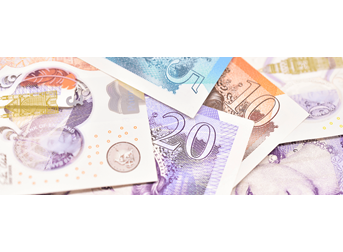Daily Brief

All about inflation
3 minute readBehind the curve?
Monday’s inflation scare continued through Tuesday, with further losses for equities. America’s DJ30 fell 1.3% and Britain’s FTSE100 was down 2.5%. Sterling remained at the front of the major currency pack but this time it shared first place with the US dollar, Japanese yen and Swedish krona.
At least for now, financial markets are not inclined to believe the Federal Reserve when it says the current inflation spike is “transitory”, distorted by artificially low prices a year ago. Investors are taking with a pinch of salt the repeated reassurances from Fed officials, including Governor Lael Brainard yesterday, that a vaccine-fuelled recovery and a bright outlook are not sufficient to justify higher rates.
Bill Dudley, the erstwhile president of the New York Fed, argued this week that the Fed’s low-forever rate policy is not without risks. He believes that the central bank will remain for too long behind the curve. Once it does start to tighten monetary policy, “they're going to be late and have to catch up”. That could mean that “a peak Federal funds rate of 4.5% is possible”.
Bye-bye LIBOR
Tuesday’s economic statistics brought as little as expected to the currency debate. Speeches by the Bank of England’s Andrew Bailey and New York Fed President John Williams stayed studiously away from the subject of monetary policy: they were talking about the transition away from London Interbank Offered Rate as a reference for loan agreements.
Figures from Europe showed Italian industrial production increasing by an annual - and Covid-distorted - 37.7% in March. ZEW’s surveys of economic sentiment – investor confidence – revealed improvements in Germany and the Eurozone. America’s NFIB federation of small and medium enterprises reported that, despite being broadly more optimistic, they are having difficulty recruiting staff. “92% of firms report few or no ‘qualified’ applicants”. Yet only 51% of companies have raised wages or intend to do so in the next three months.
This morning began with a stack of UK ecostats, most of them looking better than expected. The trade deficit for March was smaller than anticipated. Industrial and manufacturing production were well ahead of forecast. The decline in first quarter gross domestic production was revised from -1.6% to -1.5%. Sterling reacted positively to the news.
US inflation
Given the recent anxiety about the matter, this afternoon’s US consumer price index data will receive close scrutiny. The consensus is that CPI rose 3.6% in the year to April, which would be the highest inflation reading in nearly ten years. The Fed says it will look through it: will investors do the same?
There are more inflation readings today, from Germany, France and Sweden. Other European data cover Eurozone industrial production and the NIESR’s estimate of UK GDP in the three months to April.
Following the US inflation figures there is nothing on the list until Britain’s RICS house price balance at midnight. Australian new home sales might appear tonight; they have been awaited for a couple of days.
Weekly roundup



